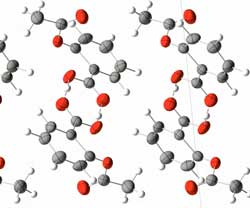
Thursday, January 31, 2019
Novel electron microscopy offers nanoscale, damage-free tracking of isotopes in amino acids
Dynamic aspirin - molecular vibrations drive electrons over large distances

Graphene crinkles can be used as 'molecular zippers'

What keeps spiders on the ceiling?

Nano-encapsulation technology enhances DHA absorption for early brain development

To observe photoswitches, stick on a platinum atom

A new topological approach to the next generation of electronic, photonic and phononic devices

A first: Researchers quantify photocurrent loss in nanoparticle interface

Maximizing the potential of MXenes

Stretchable multi-functional fiber for energy harvesting and strain sensing

Subscribe to:
Posts (Atom)
